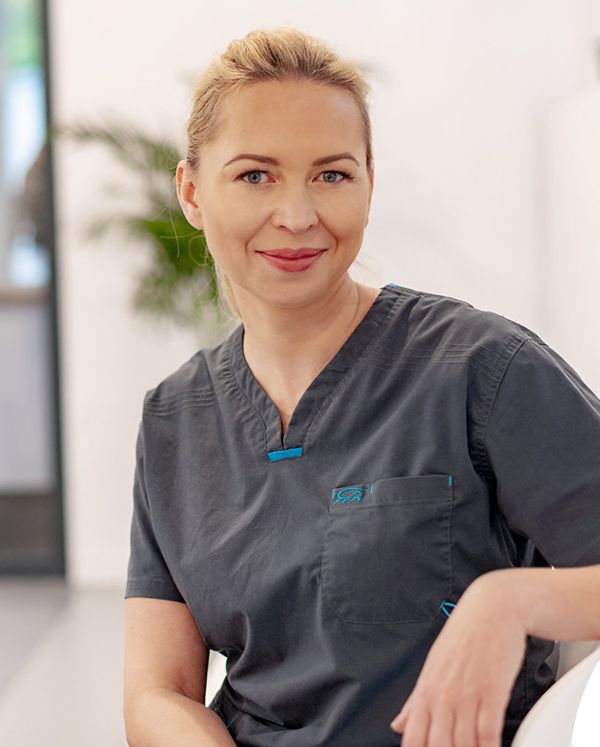BMSCs stem cells isolated from bone marrow are characterized by a high level of multipotence and natural anti-inflammatory properties that favor the treatment of inflammatory diseases. Due to these properties, they are also used in personalized, individual-tailored therapy of keratitis.
Indications: in patients with immune mediated keratitis (IMMK), subconjunctival injections selected individually after a comprehensive and detailed ophthalmic examination allow for permanent withdrawal of the disease symptoms , thus restoring the translucency of the cornea and relieving the symptoms of discomfort that accompany some forms of IMMK.

The therapies we develop are based on the cooperation of scientists and clinicians from the very beginning, meeting the expectations of modern veterinary medicine. As a result, the technologies we develop are adapted to the needs of the attending physician and his patients. We opt for the creation of a “tailor-made” therapy for the patient, fully adapted to the species, age and condition of the treated animal. In the case of ophthalmic treatment lek. wet. Anna Cisło-Pakuluk supports The Institute with her knowledge and clinical experience.

Kucharczyk N, Cislo-Pakuluk A, Bedford P Collie Eye Anomaly in Australian Kelpie dogs in Poland. BMC Vet Res. 2019 Nov 4;15(1):392. doi: 10.1186/s12917-019-2143-y.
Cislo-Pakuluk A, Smieszek A, Kucharczyk N, Bedford PGC, Marycz K. Intra-Vitreal Administration of Microvesicles Derived from Human Adipose-Derived Multipotent Stromal Cells Improves Retinal Functionality in Dogs with Retinal Degeneration. J. Clin Med. 2019 Apr 13;8(4). pii: E510. doi: 10.3390/jcm804051
Developed ophthalmic therapies
- 1. Stem cells isolated from bone marrow (BMSCs)
- 2. Regenerative microvesicles (Microvesicles LNC +)
Extracellular membrane micro fragments (microvesicles-LNC +) are isolated by applying a specialized method developed by MIMT, designed for their separation from adipose stem cells. Microvesicles- LNC + are rich in growth factors, i.e. FGF, VFGF or EGF as well as morphogenetic proteins 2 (BMP-2), as a consequence they effectively initiate and induce the regeneration process of damaged tissues. Microvesicles – LNC + are rich in both micro RNA (miRNA) and long non-coding RNA molecules (lncRNA), therefore they are characterized by high regulatory capacity and a lasting therapeutic effect.
Indications:- regeneration of the cornea in case of damage
- immunomodulatory action in order to heal the cornea with minimal scarring
- additive therapy of superficial IMMK in order to accelerate and maintain the positive effects of cellular therapy.
- 3. Subdural implants with cyclosporine
It is an innovative biotechnological solution based on encapsulation of ciclosporin into biodegradable liposomes with prolonged-release rate. Ciclosporin is a routinely administered drug in the treatment of equine recurrent uveitis (monthly blindness).
Indications:- treatment of recurrent uveitis.
Based on our research and developed technologies, in cooperation with one of the veterinary companies, we created a product for the regeneration of corneal damage.
VitalDrop are regenerative eye drops designed for both small and large animals.- They accelerate the healing processes of the cornea
- They contain sphingolipids and membrane microfragments (ExMV’s)
- They modulate repair processes by regenerating damaged eye structures
- They inhibit the pathological neovascularization of the cornea
Indications for application:- Corneal lesions, in order to shorten healing time with minimal scarring
- Intraoperative administration to intensify the healing process in combination with a collagen dressing
- Autoimmune cornea diseases
- Neurogenic keratopathies
- Pathological neovascularization
Due to the high content of membrane microfragments (ExMV’s), VitalDrop permanently modulates repair processes, therefore regenerating damaged eye structures. Stem cells membrane micro-fragments (ExMV’s) are used for intercellular communication, they are also an excellent source of growth factors and provide anti-inflammatory cytokines that effectively reduce the inflammatory reaction of the eye.
With a view to patients with cornea damage, we have created innovative eye drops which action is based on the endogenous stimulation of the patient’s stem cells.
